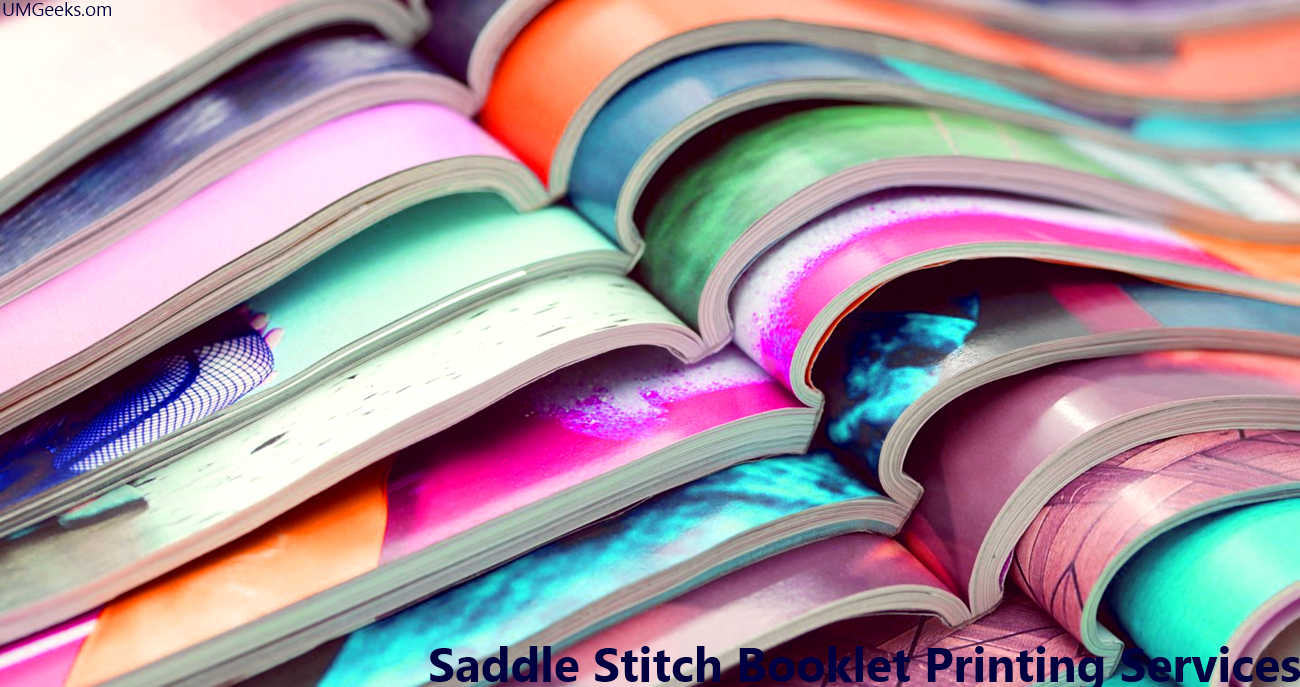Saddle stitch booklet printing is a common binding method for tiny booklets and catalogs. It's also one of the most affordable. Large sheets of paper
Saddle stitch booklet printing is a common binding method for tiny booklets and catalogs. It’s also one of the most affordable. Large sheets of paper are folded in half and stapled together to make saddle-stitched books. Each sheet is four pages long.
Cover Design
An easy and inexpensive way to bind a book or catalog is through saddle stitch booklet printing services. It is typically used for smaller publications with a few pages, such as booklets, magazines, catalogs, and cookbooks.
Printed parent pages are cut, folded, and stapled together to produce a final saddle-stitched booklet. It is the simplest binding method available and is commonly used for single-issue comic books, workbooks, shorter catalogs, brochures, and other booklets.
Generally, the cover of a saddle-stitched booklet is created from a different paper stock than the interior pages. If this is the case, submitting your cover layout as a separate file is best.
However, some saddle-stitched books are “self-cover” books, meaning that the cover paper is the same as the interior pages. This type of book can be printed in full color.
Saddle-stitched booklets can be very popular because they are inexpensive and easy to design. In addition, they can be produced in sizes ranging from 8 to 64 pages and printed on various paper stocks.
While there are a few issues with saddle stitching, one worth mentioning is “page creep.” It happens when the inner pages stick farther out of the booklet than the outer pages, which can be an issue for booklets with a high page count. It can also happen if the thickness of the sheets is too thick for the staples to hold.
Related: The Benefits of Reading Books
Page Layout
The page layout of a saddle stitch booklet printing service is essential because it determines how the book will look and feel once it is finished. It includes the binding type, paper selection, page count, and spreads.

The most common and cost-effective binding method for booklets is saddle-stitched. It consists of folded sheets to form the pages, then stapled along the fold line. It is ideal for small booklets that contain less than 100 pages and are lightweight enough to open easily.
However, this binding can only accommodate so many pages, so it is not recommended for more extensive booklets with more than a few hundred pages. Other binding methods are available, such as perfect binding and coil binding.
For example, perfect-bound booklets are often used for author novels and thicker product brochures. These booklets have a thicker cover than the interior pages to ensure durability and improve appearance.
A simple way to visualize how your page layout will look once a booklet is printed is by producing a blank mock-up of an 8-page brochure. It will allow you to see how your design and content will work once the brochure is printed and bound.
Creating your booklet file correctly at the start will allow it to be produced in the proper order – a process called imposition. Your printer will use special software to position the pages of your booklet into the optimal layout for printing, folding, and trimming. It may differ from what your design software suggests, so it is best to check with your print shop to ensure that the files you submit for production are in the correct order.
Paper Selection
Saddle stitch booklet printing services are a cost-effective and fast way to print your brochures, catalogs, and other publications. These booklets are produced in sets of four sheets, collated, folded, and stapled at the spine. They are a good choice for projects with a low page count (less than 84 pages) that require fast turnaround and high-quality print.
Selecting the right paper stock is essential to ensure that your finished product looks its best. You can choose from a wide variety of stocks, including both dull and glossy paper types. Depending on the purpose of your booklet, consider using a higher-quality stock for your cover and inner pages.
When selecting the size of your book, make sure to account for bleeds and crop marks on the pages. Creating your file in the correct orientation and page order is also essential. It helps optimize your press run.
Creating your file in the correct orientation and page order will ensure that all the pages print out correctly and remain oriented once they are stacked, printed, folded, bound, and trimmed. In addition, the correct file layout will save you time, money, and effort.
Related: 9 Best Book Marketing Services for Self-Published Authors
Binding
A printed booklet is a flat, folded book bound with staples. Its simple construction and sturdy binding make it popular for catalogs, magazines, newsletters, and more.
The most common method for binding a printed booklet is saddle stitching, which creates a book by folding the pages in half and fastening them together with wire staples at the fold. It’s the simplest, most cost-effective, and most versatile binding option.
Saddle stitching can accommodate documents with a page count of up to 36 pages. Once the page count reaches that limit, perfect binding or coil binding may be preferred.
To prepare your files for this binding method, submit high-resolution PDFs with at least 1/8 inch bleeds on all four sides. You can also choose to have the cover printed on a heavier paper stock, providing a more durable, long-lasting product.
The pages of a saddle stitch booklet printing service are folded in half to form a book with a finished size of 8.5-x 11- inches. They are then nested inside the folded sheets and stapled to create a spine. The crease formed by these folded sheets forms the book’s spine and is usually rounded out with a soft, 10-point, or 12-point cover stock. It makes the cover a consistent, uniform size for the whole book.

COMMENTS